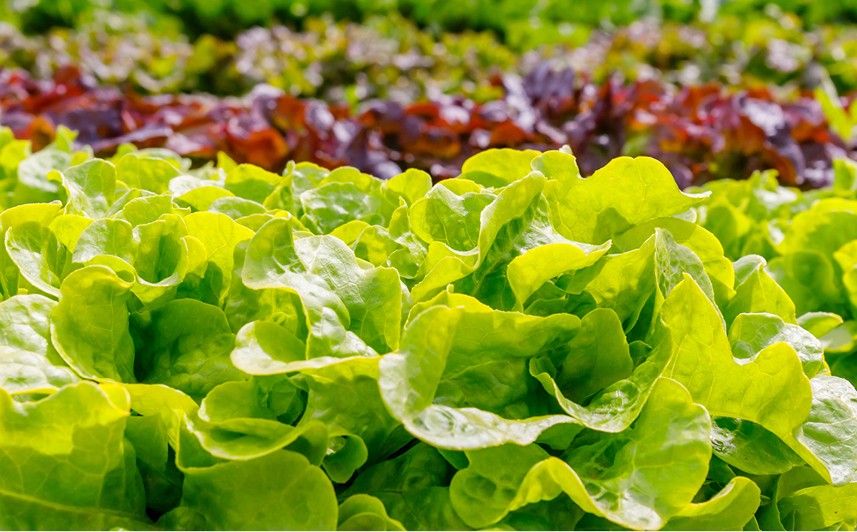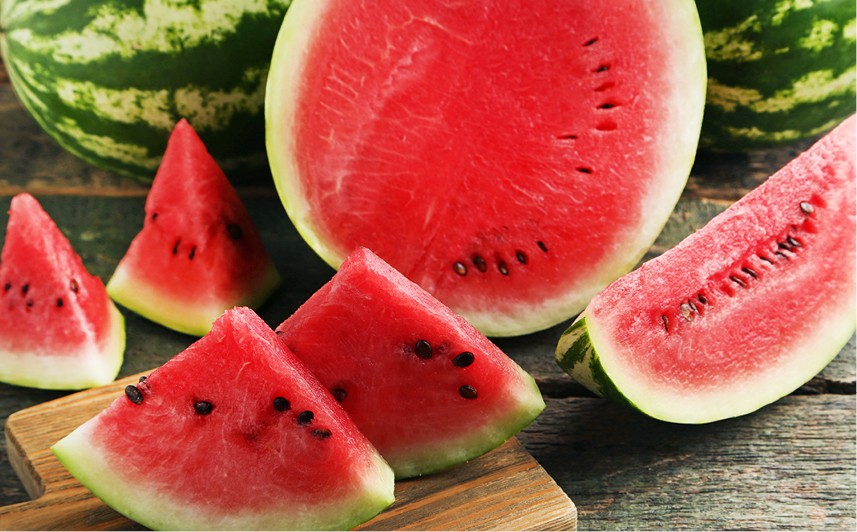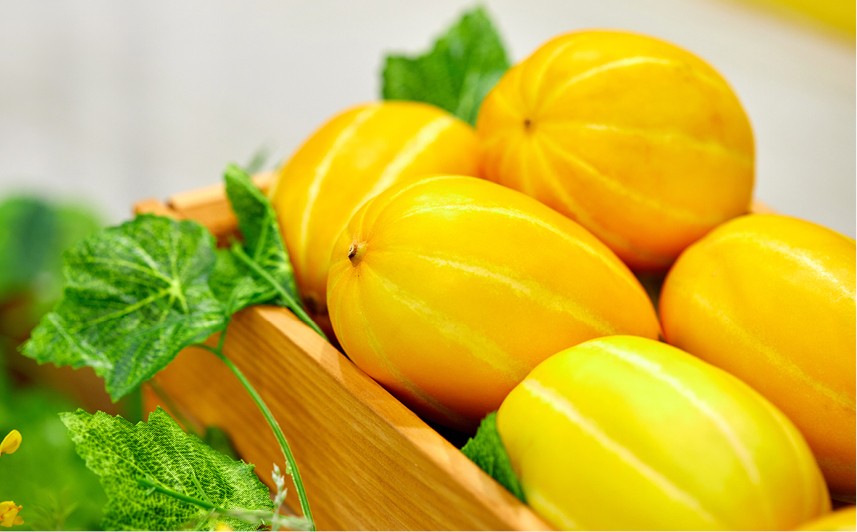한식 읽기 좋은 날
Vol 41. Cold Nourishing Food
Green, Crunchy, and Sweet Tastes of Summer
“Taste” not only exists in cookbooks. Numerous literary works written in the past tell stories about the taste of the food that our people ate at that time. The author's personal world of gastronomy is included, but that is also the food culture of that time. This is why we embark on a literary journey in search of the refreshing summer taste.
References. <The Food We Ate 100 Years Ago>
(Baek Seok, Lee Hyo-seok, Chae Man-sik, et al., published by Gagyanal)
<Humanities of Vegetables>(published by Jeong Heygyeong, Tabi)
Data. Korea Agricultural Marketing Information Service–KAMIS(www.kamis.or.kr)

“Ssam Vegetables(Vegetable Wraps)”, the Taste of Greens in Summer
“I like summer because I can eat vegetables, including spinach, crown daisy, and vegetable wraps. They are truly appetizing.”
<The Taste of Summer>, an essay written by Gye Yong-mook in 1942, the author of the novel <Idiot Adda>, started like this. This essay contains the sadness of the reality that it is difficult to find the delightful taste of summer, when one can "dip the fresh vegetable leaves in garlic soy sauce and chew them happily". What is interesting is that if you follow the author's efforts to find the green and fresh taste of summer, you can feel the green and healthy taste of summer vegetables as you are eating them. The taste of eating fresh and healthy vegetables during summer is only known to Koreans who have enjoyed the fresh taste of seasonal vegetables. This is the reason why we sympathize with the author’s lament, “For the last two or three summers, when one usually longs for ssam, I haven’t been able to enjoy it as much as I could even though I love it so much.”
Summer Nourishment and Lettuce
The taste of vegetable wraps that contain the essence of refreshing summer is the one that we long for especially during summer. According to Jeong Hyekyung, the author of <Humanities of Vegetables>, “It is by far the best summer nourishing food to eat dazzlingly beautiful green and leafy ssam with delicious gangdoenjang (soybean paste sauce) or sauteed red chili paste.” Among the ssam vegetables, lettuce is by far the best.
The Taste and Efficacy of Lettuce
Lettuce is composed of 94% water, 1.8% protein, and 0.7% inorganic salts. Compared to other leafy vegetables, it is rich in iron and essential amino acids, which are known for purifying the blood and preventing hypotension. Lactucarium, a milky juice component of lettuce leaf stems, calms the mind and body, thus relieving stress and insomnia. Rich in fiber, it is effective in improving the intestinal environment and relieving constipation. Abundant moisture and large amounts of vitamins A and C help to make the skin bright and supple. It also helps to lower cholesterol levels.
How to Choose Lettuce
• The color should be bright and shiny.
• It is fresh if milky juice comes out when the stem is cut.
• The leaves should be tender and thick and not withered.
• It should be about the size of your palm, not too big.
• Do not choose the ones that are withered or have discolored edges.
• When purchasing washed lettuce, choose the ones that are refrigerated.
How to Trim Lettuce
• After soaking in water for about 5 minutes to remove residual pesticide, rinse the lettuce including the rough back side thoroughly with running water.
• It is good to rinse again in water with vinegar.
How to Store Lettuce• It is best to consume it immediately after purchase.
• If possible, consume it within 3 days of purchase, and check frequently for mold.
• Before washing it, remove dirt or foreign substances, and store it in the refrigerator.
• Put the washed lettuce in an airtight container or plastic bag to block the air, and store in the refrigerator.
• It can be stored longer if it is standing upright with the stem facing down in the refrigerator.
• When the lettuce has withered, soak it in water mixed with 1 Tbsp of sugar and 2-3 drops of vinegar for 10 to 20 minutes. Water is supplied to the lettuce by osmosis of sugar.
How to Eat Lettuce• As ssam vegetables(vegetable wrap), salad, pickled vegetables, ingredients for bibimbap and rice bowl, lettuce kimchi, lettuce water kimchi, lettuce jeon, seasoned lettuce, pickled lettuce, ingredients in hamburgers or sandwiches, etc.
Food Pairing• It is good to eat with meat as it is rich in vitamin C, beta-carotene, and fiber.
• Eating with pork will suppress cholesterol accumulation.

Crisp, Sweet Taste of Summer, “Summer Fruit Vegetables”
The taste of summer we read in novelist Gye Yong-mook’s essay <The Taste of Summer> is not just the taste of green vegetables. Gye praised the crunchy and sweet summer fruit vegetables, Korean melons and watermelons, by writing, “The taste of Korean melons and watermelons are never less than those of autumn vegetables.” In his essay <Watermelon>, Gye also praised the fruit by saying, “Watermelon is an elegant and honest fruit.”
Among the novels, essays, and poems written in the early and mid-1900s, there are many works based on watermelon and Korean melon, which are Korea’s representative summer fruit vegetables. This shows that they have been loved for a long time as summer fruits. In his essay <ChamoeKorean Melon>, novelist and journalist Usuda Zanun, who served as a reporter for the Kyungsung Ilbo, wrote, “Joseon melons are great. Joseon people pass summer by eating Korean melons.”
Taste and Benefits of Watermelon
Watermelon contains approximately 90% water. The juice is full of electrolytes that are beneficial to the human body, so it is good for preventing heat stroke. Since it contains a special amino acid called citrulline that converts protein into urea and is excreted in the urine, it is helpful for people with poor kidney function. Watermelon seeds contain linoleic acid, an unsaturated fatty acid that is good for the prevention of arteriosclerosis, as well as proteins and vitamins.
How to Choose a Watermelon• Large ones are the best. The rind should be thin and elastic.
• The black stripes should be clear.
• A watermelon is ripe if the green stripes have the color of leaves.
• The ones with a glossy surface and bright colors are the best.
• It is ripe if it produces a clear sound when tapped with your hand.
• Choose the one that is heavy (8 kg – 10 kg) and has no scratches.
• Choose the one with a stem that is not dry, but moist when it is twisted.
• The more it floats in water, the fresher it is.
• The one with white powder has high sugar content.
• The stem should be “T” shaped and not dry.
• The absence of a stem doesn’t mean it is a bad produce.
• Avoid the ones with a yellowish bottom.
• Choose the one with a small navel.
• The absence of a faucet does not imply that the product is of low quality.
• Avoid a yellowish bottom.
• Choose one with a thin stem and a small navel that is dipped inside.
How to Store a Watermelon• If you store it in the refrigerator for a long time, its sweetness decreases, so eat it as soon as possible after purchase.
• Before slicing the watermelon, wash the surface thoroughly as bacterial growth may occur when covered in plastic wrap.
• It is recommended to clean the rind with baking soda or vinegar.
• If it is exposed to rain or soaked in water for a long time, the water will seep into the watermelon through the stem, resulting in decreased sugar content and loss of flavor. So, avoid storing in water.
• Watermelon is a high-temperature vegetable, and long-term storage at low temperatures may cause low-temperature damage.
• Since it absorbs and discharges moisture through the stem, it is better to pack the stem in plastic or wrap for storage.
• When the watermelon you bought is unripe, wrap the whole watermelon in newspaper and store it at room temperature.
How to Eat a Watermelon• As fruit, juice, watermelon punch, watermelon rind pickles, sugared rind, rind tea, etc.

Taste and Benefits of Korean Melon
Rich in vitamin C, folic acid, and sugars that are quickly absorbed into the body, such as glucose and fructose, it is good for recovery from fatigue and preventing anemia. It is also effective in preventing various adult diseases, such as high blood pressure and cardiovascular disease, as well as improving blood vessel function by helping to excrete sodium from the body. It is low in calories, about 30 kcal per 100 g, and it has a high water content, so it is effective for dieting as you can feel full easily even with a small amount. However, Korean melon has a cold nature, so eating a large amount at once is not recommended. Since it contains a lot of potassium, people with kidney disease should be careful in consuming this.
How to Choose a Korean Melon• The ones with a narrow navel, bright yellow color, clear ridges, and fresh stem are good.
• The ones with brownish, withered outer skin and dried stem are bad.
• The ones with oval shape and sweet scent have good flavors.
• If the scent is too strong, it may have been harvested a long time ago or it may have been harvested after the harvest period.
• If you picked a melon today, a blue sap oozes out.
• There are 10 ridges on the outer skin and if 3 ridges are visible over water when it is immersed in water, it is a good one.
• The ones with deep ridges with fine thorns are good.
• The outer skin should be hard and thick for excellent storage.
How to Store a Korean Melon• It is better to wrap it in paper, such as newspaper, or put it in a bag and store it in a cool place.
• The best temperature to eat a Korean melon is 5~6℃.
• Wrap each piece with a newspaper or plastic wrap, and store it in an airtight container to prevent moisture from vaporizing.
• The sugar content increases by 30-40% in a space with a temperature of about 5℃.
• When storing Korean melons, keep them in the refrigerator for a more intense sweetness.
• If possible, it is best to consume it before a month has passed.
How to Eat a Korean Melon• As fruits, punch, pickles, kimchi, seasoned dish, etc.

 한국어
한국어
 English
English






